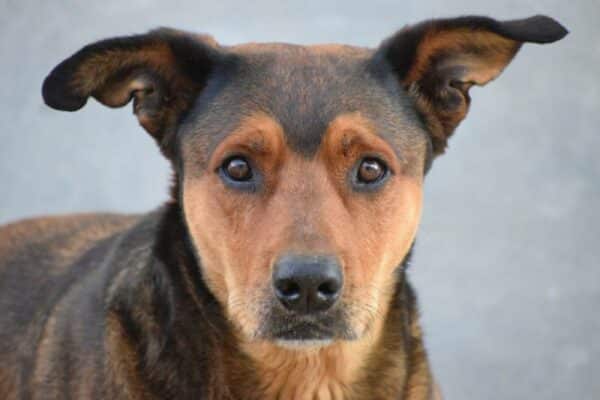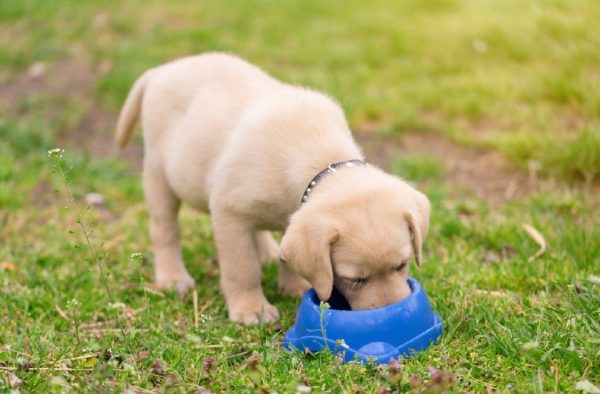In this article
Pit Bulls are a diverse bunch. The term “Pit Bull” itself is often used to refer to and classify multiple dog breeds, including the American Staffordshire Terrier, American Bulldog, American Pit Bull Terrier, and American Bully, but these are breeds in themselves. “Pit Bull” is not a term used to describe a breed but is an umbrella term for various kinds of dogs.
In fact, the term could refer to any dog with physical features that fit the ideal of what people think a Pit Bull looks like. Typical features include a medium-sized, stocky, muscular body; a smooth, short coat; floppy ears; and a long, slender tail, but these traits vary greatly, especially since many so-called Pit Bulls are actually mixed breeds.
Because the term Pit Bull is so broad and many Pit Bulls are mixed, these dogs can come in pretty much any color and pattern. In this post, we’ll introduce some gorgeous Pit Bull coat colors and patterns, both common and rare.

Pit Bull Colors & Combinations

1. Black
Black Pit Bulls’ coats are often very noticeably glossy, giving these dogs an almost panther-like appearance. Black is a breed standard color for some of the breeds often referred to as Pit Bulls, including the American Staffordshire Terrier (AKC), Staffordshire Bull Terrier (AKC), the American Bully (UKC), and the American Pit Bull Terrier (UKC).
That said, the UKC accepts any American Pit Bull Terrier color or pattern except for merle or albino. Mixed-breed Pit Bulls can also be black depending on their parentage. If you parent a black Pit Bull, be sure to kit them out with a fluorescent collar when you walk them at night!

2. White
White is a kennel club-accepted color for various breeds, and it may present as solid white or with markings. Please note that a white-coated Pit Bull isn’t the same as a Pit Bull with albinism (lack of melanin production) or leucism (a condition that causes white patches on the coat or skin). Albino dogs typically have pink-looking skin around the eye area, blue eyes, and pink noses.

3. Blue
Blue describes a silvery gray or charcoal color that’s pretty rare. Dogs with blue coats have two copies of the color dilution gene, which causes coat dilution from black to blue.1 Blue is an accepted Pit Bull coat color for some “pittie” breeds, like the American Staffordshire Bull Terrier (AKC). Some Pit Bulls even have “blue” noses, and these are referred to as Blue-nose Pit Bulls.

4. Red
Red Pit Bulls are a coppery or chestnut shade that can range from a lighter to a darker shade. Like Blue-nose Pit Bulls, you can also find Red-nose Pit Bulls. Blue and Red-nose Pit Bulls are not separate breeds, however—just something to be aware of.
Red is a kennel club-accepted Pit Bull coat color for Staffordshire Bull Terriers (AKC), American Staffordshire Terriers (AKC), and American Pit Bull Terriers (UKC). It’s a very common color in American Pit Bull terriers.

5. Fawn
Fawn, which is a light tan or yellowish color, can either be simply fawn or come as part of a color combination or pattern, like fawn sable, blue fawn, fawn brindle, and so on. The Staffordshire Bull Terrier, for example, can have various combinations as per the AKC breed standard, but as mentioned in the intro, Pit Bulls are a real mix, so anything is possible.

6. Tan
Tan is a sort of light brown or reddish-brown color that appears darker than fawn but lighter than red. Any Pit Bull-type dog can have tan or tan with a combination of other coat colors, but it’s not considered standard for Staffordshire Bull Terriers (AKC) and American Bulldogs (AKC). The AKC does list a non-standard tan combination for American Bulldogs, however, which is white and tan.

7. Brown
Brown is listed as an accepted coat color for American Staffordshire Terriers (AKC) and describes a rich, chocolatey shade as opposed to a light fawn or tan color. White and brown is a non-standard color for American Bulldogs (AKC). This Pit Bull coat color can also be called liver or chocolate, but the genetics behind it are the same. Two recessive alleles at the TYRP1 (brown) gene cause a brown color, whereas dogs with the dominant varieties are black.

8. Seal Brown
Another AKC-accepted American Staffordshire Terrier color, seal brown is a shade of very dark brown that appears almost black if you can’t get an up-close look. It’s noticeably darker than other brown or brownish shades, including standard brown, fawn, and tan.

9. Brindle Combinations
Brindle is a coat with a streaky pattern, often a reddish-brown base with black streaks or stripes. The stripes are obvious but well-blended with the rest of the coat. Brindle Pit Bulls come in various color combinations, including brown brindle, liver brindle, blue brindle, blue fawn brindle, black brindle, red brindle, and white and brindle.

10. Sable Combinations
Sable is another pattern with variations. Sable-colored dogs have black tips on their hairs with dark hair being more prominent on their head, and sometimes over their back and tail, and sable can be combined with another color, with red sable and fawn sable being two examples.

11. Merle
Though not a kennel club-accepted color for breeds often referred to as Pit Bulls, the merle coloration does sometimes occur. Merle is a color combination that gives the coat a marbled effect. The base is usually light with darker shades splashed over the top. Merle is a color that doesn’t come along very often.

Pit Bull Markings
Pit Bulls commonly have markings in various areas on their bodies, including the head, back, legs, and belly. While some only have a small proportion of the color, others have larger areas of it. Marking possibilities for Pit Bulls are white, red, black, brown, tan, or brindle.

12. Spotted/Patched
Pit Bulls sometimes have spots or patches on their coats, and both spotted and patched are AKC-standard markings for American Staffordshire Terriers. Sometimes, breeding between Pit Bulls/Pit Bull types and breeds with spotted coats can cause this effect.
13. Mask Markings
A mask on a dog refers to coloration on the muzzle and face, which makes it look like the dog is wearing a mask. Pit Bulls can have masks in various colors, including black, white, and blue. Other breeds famous for their mask markings are Pugs and German Shepherds, to name but a couple.

Conclusion
As we can see, there is a multitude of coat color and coat pattern possibilities for dogs known as Pit Bulls. These dogs are so diverse because their parentage is often very diverse, and even purebred dogs commonly classified as Pit Bulls, like American Staffordshire Terriers (AKC-recognized) and American Pit Bull Terriers (UKC-recognized), can come in a wide variety of colors as per their breed standards.
Related Read:
- Types of Pitbull Bloodlines (With Pictures)
- Popular Dogs That May Be More Agressive Than You Think
- Not All Small Dogs are Clingy!
Featured Image Credit: Chris Anabalon, Shutterstock



















